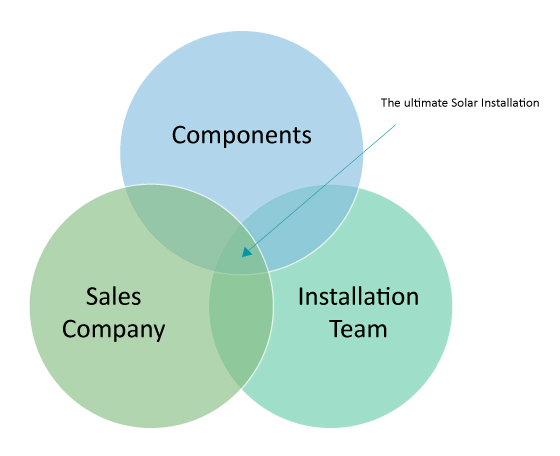Frequently Asked Questions
What is a solar installation made up of?
There are a number of components in a solar installation however the main two components are the Solar Panels which convert UV into DC Energy and the Inverter which converts DC Energy into 240 V AC Energy for use in your home or business.
Other components that are utilised include the mounting system which forms a base frame for installing the panels on the roof, the DC Isolators which allow the system to be isolated in the event of a fault, UV Stabilised Conduit for running cables and a smart meter which allows you to look at the energy being produced by the system, the energy being consumed onsite and the energy being exported to the grid.
What makes for a good quality solar installation?
There are a number of factors that contribute to a good quality solar installation however from our perspective the three that will determine the long term success of the system are the sales company, the components and the installation team. The nexus of these three is what you are hoping for in any installation.

Sales Company: Finding a quality sales company is probably the easiest of the three – finding a quality sales company that you trust is often more difficult. Often your interactions with a sales company will be through the sales person who is driven by sales volumes and commissions and not by the long term success of the company. My recommendation is always to ensure that you have a direct line of site to the owner of the business and that you trust them. This will ensure that if something goes wrong you can access them.
Components: The solar industry is flooded with different manufacturers so it is often hard to determine what components are good quality vs poor quality. If you’ve identified a good quality sales company then they will provide sound recommendations as to the components you should use. It is in their interest to ensure that the components last as any return trip is going to be under warranty and not overly profitable for them. Things to look for in a good quality component supplier include:
- How long have they been in business?
- Do they have a local Australian business or is the company only support through a distributor?
- Who else has chosen them – look at the case studies
Installation team: there are lots of good quality installers out there however there are also a lot of very poor quality installers. For the majority of sales companies the quickest way to reduce cost and increase profit is to outsource the installations to small teams with low overheads. Quality Sales companies still outsource however they will have long term installation partners in place who have installed many systems for them. Ask the question as to who is going to be installing for you before you sign the contract.
Small Scale Technology Certificates*
Under the Small-scale Renewable Energy Scheme, eligible small-scale renewable energy systems are entitled to a number of small-scale technology certificates. The number of certificates that can be created per system is based on its geographical location, installation date, and the amount of electricity in megawatt hours (MWh) that is:
- generated by the small-scale solar panel, wind or hydro system over one or five years, or a single maximum deeming period, or
- displaced by the solar water heater or heat pump over the course of its lifetime of up to 10 years.
As a guide, one certificate is equal to one megawatt hour of eligible renewable electricity either generated or displaced by the system.
You can calculate the number of certificates a system may be eligible for using the small generation unit STC calculator and solar water heater STC calculator.
The Renewable Energy Target is supported by an online registry system, called the REC Registry, which facilitates the creation, validation, auditing and transfer of certificates
*http://www.cleanenergyregulator.gov.au/RET/Scheme-participants-and-industry/Agents-and-installers/Small-scale-technology-certificates